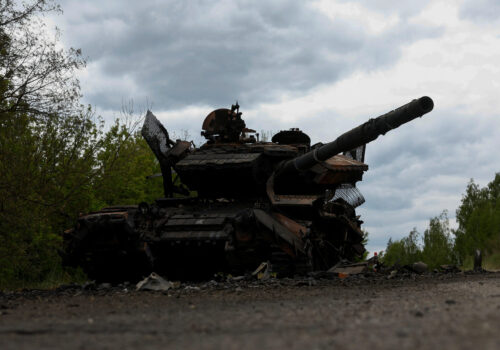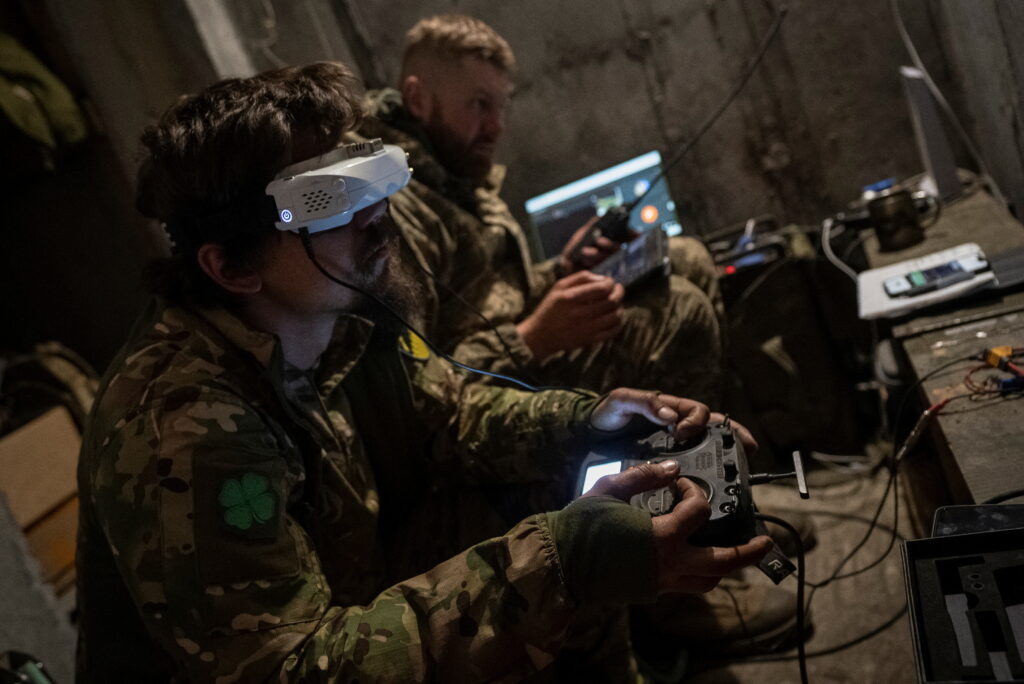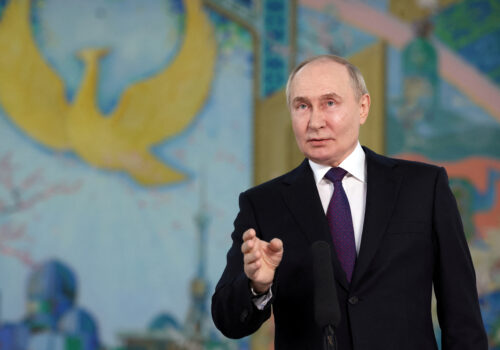
FPV drones in Ukraine are changing modern warfare

The full-scale Russian invasion of Ukraine is often referred to as the world’s first large-scale drone war. But what exactly does “drone war” mean in practical terms, and how is this war being waged?
Media coverage of the drone war often focuses on particular models such as the Shahed drones used by Russia to attack Ukrainian cities and civilian infrastructure, or the Bayraktar drones that played an eye-catching role in Ukraine’s fight back during the initial stages of the invasion. However, behind these brands lies a much more complex and rapidly expanding drone ecosystem.
By far the most prevalent type of drone on the Ukrainian battlefield is the First Person View (FPV) drone—a type that our company sells in Ukraine and elsewhere. Despite their relatively low cost compared to other aerial platforms, FPV drones possess a number of capabilities that have resulted in a dramatic shift in our understanding of modern warfare. Given their navigation capabilities, these drones have become the preferred platform for mounting explosives and executing targeted strikes.
Stay updated
As the world watches the Russian invasion of Ukraine unfold, UkraineAlert delivers the best Atlantic Council expert insight and analysis on Ukraine twice a week directly to your inbox.
Originally emerging from the realm of civilian hobby drone racing, FPV drones have robust motors and frames that are built to withstand the rigors of high-speed races and multiple crashes.
Relative to their fixed-wing cousins, copter-type drones have greater maneuvering capabilities, which, in the hands of skilled pilots, convert into precision targeting unique to FPV drones. It is not uncommon for pilots to fly their drones through the window of a building or into the open hatch of an armored vehicle, unleashing an explosion on exposed personnel inside. FPV drones are also well-suited for targeting specific equipment like optics, radars, and antennas mounted on the exteriors of armored vehicles.
FPV pilots in Ukraine do not normally operate from front-line trenches. Instead, they typically serve in specialized teams located around two to five kilometers away from the front line. This distance provides them with relative security from small arms and larger systems mounted on armored vehicles as well as from the indirect fire of mortars.
The nature of drone piloting equipment offers an additional layer of protection. Since everything is controlled remotely, only the antenna transmitting between the drone and operator needs to be exposed. The remaining equipment and the team can conduct their operations from the safety of a bunker or basement.
While hubs of drone operators are now recognized as high-value targets, in practice most attention is focused on blocking or destroying the drones themselves. This shift of lethal danger from personnel in forward positions to drones has accelerated the proliferation of FPV drone usage. It appeals to soldiers, who naturally seek to minimize the dangers of combat, and also appeals to Ukrainian and Russian commanders as they wage a war of attrition amid growing manpower shortages.
Eurasia Center events

The main feature that has made FPV drones such a key weapon in the Russian war on Ukraine is their relatively low cost, with prices for a single unit sometimes lower than five hundred US dollars. This affordability, coupled with performance and tactical versatility, helps to explain the ubiquity of FPV drones on the front lines of the war. For Ukraine, which has not always had access to predictable weapons supplies from its Western partners, the affordability of FPV drones has helped its military stay in the fight, despite being outgunned by Russia.
In technological terms, FPV drones are currently in the early stages of their development. Most components are still sourced from the civilian market, while many models offer only a relatively limited range of frequencies. This is significant, as jamming is considered the Achilles’ heel of FPV drones. Many skeptics argue that it won’t be long until jammers are employed everywhere, rendering radio controls useless. However, jammers have their own hardware limitations that can be difficult to overcome.
Creating signal interference relies on sending a stronger signal than the one it is aiming to jam. In other words, effective jamming capabilities require considerable electrical power and bulky hardware. This is why most infantry units can only operate with small jamming devices that create a limited protection bubble for short periods of time. Stronger jamming systems can be employed on armored vehicles, but the prevalence of tank “cope cages” and the recent appearance of “turtle tanks” hints that physical armor is still the go-to protection against FPV drone attacks.
Despite efforts to counter them with jamming technology, FPV drones have proven resilient and have managed to adapt effectively to electronic warfare measures. Ongoing innovations in areas such as customized frequencies, frequency-hopping, and automated flight patterns promise to further enhance their effectiveness.
The Russian invasion of Ukraine has brought FPV drones to prominence as a component of modern militaries and it appears that they are here to stay. This can be seen in the way the Ukrainian and Russian armies are both incorporating this technology into existing military structures. Indeed, in early 2024, Ukraine launched a new branch of the country’s armed forces dedicated exclusively to drones.
There are few reasons to believe the role of FPV drones will diminish in the coming years. On the contrary, as technologies advance and military tactics evolve, FPV drones are likely to become even more prominent in the wars of the future. This new reality is already being digested by military planners and commanders around the world. As they look to assess how best to incorporate FPV drones into their own defense doctrines, they will be studying the significant shifts currently taking place on the Ukrainian battlefield.
Tomas Milasauskas is CEO of RSI Europe, a Lithuania-based remotely controlled systems manufacturer for the defense sector. Liudvikas Jaškūnas is head of marketing and communications at RSI Europe.
Further reading
The views expressed in UkraineAlert are solely those of the authors and do not necessarily reflect the views of the Atlantic Council, its staff, or its supporters.

The Eurasia Center’s mission is to enhance transatlantic cooperation in promoting stability, democratic values and prosperity in Eurasia, from Eastern Europe and Turkey in the West to the Caucasus, Russia and Central Asia in the East.
Follow us on social media
and support our work
Image: A Ukrainian serviceman of the attack drones battalion of the Achilles, 92nd brigade, operates a drone at his front line position, amid Russia’s attack on Ukraine, near a Russian border in a Kharkiv region, Ukraine May 15, 2024. (REUTERS/Inna Varenytsia)




